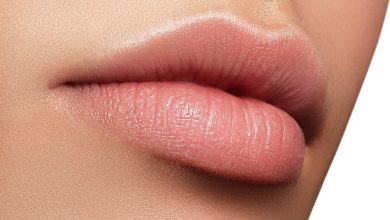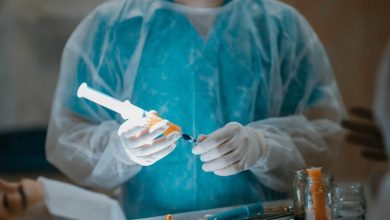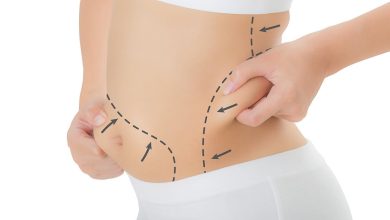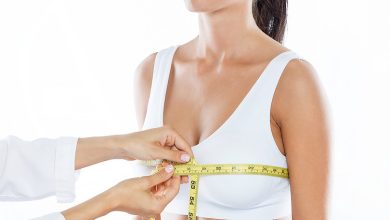Dos and Don’ts in the Hospital after Rhinoplasty
Things to Consider at Home After Nose Aesthetics Rhinoplasty
It is of vital importance to be aware of precautions after rhinoplasty operation.
- The patient spends the first postoperative night in the hospital and is closely monitored.
- Necessary antibiotics, painkillers and tranquilizers are administered intravenously.
- The patient is kept in a semi-sitting position to lower the facial blood pressure.
- Cooling masks or ice packs are applied to the forehead and cheekbones areas. Keeping the patient in a semi-sitting position from the waist and applying cold are extremely important in terms of reducing blood leakage and managing the swelling.
- Two hours after the operation, oral liquid food intake is started; and after about four hours, the patient gets up under the supervision of a nurse. Excessively leaning forward and straining on the toilet should be avoided. Such actions are unwanted as they increase the facial blood pressure. In case of constipation, stool softeners can be used.
- It is natural to observe a bit blood leakage from the nose during this period. A slight increase in the amount of leakage occurs during activities such as walking and talking. There is no need to worry, stay calm. The leak, which is red on the first day, will turn pink in the following days and there will be a decrease in its amount.
- More or less swelling and bruising will develop around the eyes and face after rhinoplasty operation. The swelling peaks after 24 hours (the first postoperative night at home), then shifts downwards from the upper eyelids and subsides in about 1 week. During this period, it is very important for the patient to stay in a semi-sitting position, apply cold compresses, and avoid excessive movement and work.
- On the next postoperative day, the patient is given antibiotics and painkillers to use at home, and he/she is explained how to care for the nose. A detailed information form titled “Dos and Don’ts after Rhinoplasty Operation” is given to the patient, and then the patient is expected to strictly follow the instructions.
- In the first days after rhinoplasty, when the patient is not recommended to be alone, he/she should definitely have a companion.
Dos and Don’ts At Home After Rhinoplasty
The postoperative period of rhinoplasty is as important as its preoperative period and the operation process. First of all, we should act very consciously to avoid possible complications related to the general medical condition, and to detect and treat them in a timely manner, if any.
At this stage, it is of vital importance to follow your physician’s advices seriously, and to stay in touch with him/her.
It is frequently observed that complications develop when some patients do not thoroughly pay attention to the postoperative recommendations of the physician, and push the limits because of various reasons. In the postoperative period, the patient should strictly follow the advice of the physician, even if he/she feels so good and feels no pain.
You should inform your surgeon at any time of the day especially if any of the followings occurs:
- Fever of greater than 38.5 C
- Shortness of breath
- Severe pain
- Continuous fresh red blood coming from the nose
- Extreme weakness
- Mental fog and excessive sleepiness;
In addition to these, inform your surgeon if you feel anything going wrong. If you cannot reach the surgeon due to any reason, you should apply to the emergency department of the hospital, where your surgery has been performed, or the emergency department of the nearest hospital.
Covid-19 Pandemic Precautions
General anesthesia weakens the immune system. Therefore, visitors should not be admitted for the first 2 postoperative weeks, in order to avoid possible transmission of the corona virus and COVID-19 disease.
Other people sharing the same area should also take all precautions, such as wearing masks and following the distance rule. The room should be ventilated frequently. If the patient feels symptoms such as sore throat, difficulty in swallowing, headache, muscle pain, cough or excessive weakness, a PCR test should be performed and appropriate treatment should be started.
Breathing Exercises:
If the patient cannot get deep enough breaths due to any reason such as pain after rhinoplasty, there is a risk of obstruction in the airways (atelectasis) and associated lung infection development. Therefore, the patient should take deep breaths 3-5 times per hour, in such a way as to fully inflate the lungs. Adequate fluid intake reduces the risk of bronchial obstruction.
Medication and Nutritional Supplements
In the first 15 day after the rhinoplasty operation, take great care to avoid consuming drugs and nutritional supplements (such as aspirin and green tea) that you should also not consume in the preoperative period as they increase the risk of bleeding in the surgical site.
Be careful to use the drugs given you to use at home after rhinoplasty as recommended, and do not change the doses without consulting your physician. Inform your physician when you observe any unwanted side effects.
Keep using your regular drugs such as blood pressure drugs, anti-diabetic drugs and anti-thyroid drugs with the knowledge of your physician after rhinoplasty operation.
Position
You should stay in a semi-sitting position from the waist. At night, the knees can be supported by placing pillows under them to prevent sliding down while sleeping. Since this reduces the venous pressure in the face and nose, less swelling and bruising occur. This also makes the breathing process more comfortable. You can also support your arms by placing pillows under them.
Cold Application
Especially in the first 2-3 days after rhinoplasty, cold application to the cheeks and forehead for 10 minutes every half hour while you are awake will reduce the postoperative swelling and blood leakage from the nose.
Restriction of Movement
In order to reduce the risk of pain and bleeding, you should avoid strenuous movements that can increase the blood pressure. For a period of at least one week, you should avoid strenuous movements such as excessively straining on the toilet, lifting heavy things, doing housework, carrying a child, and driving a car. You should avoid excessively leaning forward from the waist. You should abstain from blowing your nose.
You don’t need to restrict your neck movements. Talking, laughing, moving or walking too much will also increase the blood leakage. On the other hand, you will be able to do non-strenuous movements such as eating, combing your hair, washing your hands and face. Active sports activities, which are likely to increase the blood pressure, should be avoided for a period of one month.
Diet
Adequate fluid intake (1.5-2 liters per day) is important in ensuring the drugs, used in the surgery process, to be easily discharged from the body; in reducing the risk of clot formation in the legs; and in ensuring sufficient blood circulation in the tissues. Reducing the fluid intake, with intent to feel the need to go to the toilet less often.is one of the most common mistakes. An indicator of consuming adequate amount of fluids is that your urine is light in color, while dark yellow urine means you don’t consume adequately.
In this process, the patient should stay away from alcohol, some medications such as Aspirin, and some herbal products such as green tea, as all these may increase the risk of bleeding. In the postoperative period of rhinoplasty, strict diets intended for weight loss should not be adopted, and instead, a well-balanced high-protein diet should be preferred. Care should be taken to avoid constipation and to consume high fiber vegetables, fruits and prebiotics for this purpose. If needed, you can ask your doctor for medication support.
Smoking
Since it causes spasm and vascular stenosis, smoking has an extremely unfavorable effect on tissue healing in plastic surgeries, where blood circulation is of great importance.
Bathing
You can take a short shower with lukewarm water in such a way so as not to wet your bandages. You can have your hair washed like at the hairdresser.
Sleeping
Pay attention to sleeping on your back using a high pillow for the first two weeks after rhinoplasty. You will then be able to lie on your side. Wait for a period of 3 months to lie face down.
Having sex
You should stay away from sexual intercourse in the first two weeks after rhinoplasty, due to the risk of increased blood pressure and bleeding at the surgery site.
Wearing Glasses
Do not wear glasses for a period of 6 weeks after rhinoplasty unless your physician tells otherwise. You can wear lenses.
Sun Protection
A sunscreen with a sun protection factor (SPF) of 40-50 should be applied and a hat should be worn to prevent the formation of spots on the nose skin. Active sunbathing should be avoided.
Sports Activities
The nose should be protected from possible traumas, bumps and blows for a period of 6 weeks after rhinoplasty (the time required for the bone union). After the first postoperative month, you will be able to start walking and doing non-strenuous light sports. You can swim in the sea and the pool. After getting out of the water, it will be useful to clean the inside of the nose with plenty of water.
Nasal respiratory function: On average, it takes 6 weeks for the edema in the nose to completely subside and the wounds to completely heal. For this reason, you may not be able to breathe comfortably through your nose in the first postoperative weeks. You should be patient and carefully perform the intranasal treatments recommended to you.
In the following period, it is generally not possible to breathe equally through the nostrils comfortably at the same time, and one side is more open than the other, varying throughout the day. This is the same for normal people.
The sense of smell
The sense of smell may change but it will return to normal over time.
Aesthetic appearance of the nose: After the operation, the aesthetic appearance of the nose changes every month and it takes 1-2 years on average for the nose to take its final shape. At the end of this period, not all the factors affecting the result will be under the control of your physician.
In the wound healing process after rhinoplasty, the healing properties of your tissues are as important as the success of the surgery.
In the first postoperative weeks, the nasal skin is edematous and looks thicker than it is. As a new wound healing process, a connective tissue synthesis begins between the nasal skin and the underlying bone and cartilage tissues. Stiffness and asymmetries caused by the newly synthesized connective tissue can be observed in the first 6 months.
Swelling may not subside homogeneously in all points of the nose. The nasal tip, in particular, becomes wider and harder than normal. As the newly formed connective tissue softens and the nasal skin gets thinner over time, the details appear and the process of returning to normal becomes evident.
In some cases, we may encounter a more swollen, asymmetrical and stiff nose due excessive new connective tissue formation between the nasal skin and the tissues under it.
In such cases, controlled massage and, if necessary, small doses of cortisone injections into the connective tissue are beneficial.
It is difficult to achieve absolute symmetries in the nostrils, so you should be prepared for minimal asymmetries.
When you notice something abnormal in the aesthetic appearance of your nose, share it with your physician, listen to his/her recommendations, and be patient. Remember that it is necessary to wait at least a year for any retouching or revision.
Sensation in the Nasal Skin
Decreased sensation of the nasal skin is normal in the first months after rhinoplasty. It will be recovered over time.
Incision Scars
Although the incision scars on the middle part of the nose and on the nasal wings are prominent in the first months, they will be unobtrusive by take their final form within 2 years. Especially in the first 6 postoperative months, you should protect the incision sites from the sun very well by applying sunscreens and other creams recommended to you.
Mental Changes
In the first postoperative days, it is very normal to experience a temporary mental depression and feel anxious about the success of the surgery. Trying to make inferences about the result, by looking in the mirror or taking a photo while there are still tapes on the nose, may sometimes cause unnecessary anxiety.
During this period, it is normal to see asymmetries in the nostrils and observe that the nasolabial (nose-upper lip) angle is more than it should be due to edema.
Especially the first days after the removal of the tapes are important, because both you and your friends will look at your nose and make comments differing from one another.
Even the simplest negative comment made during this period can demoralize you. Therefore, you need to be patient and very strong psychologically, by reminding yourself often that your nose is not yet in its final state.
On the other hand, after rhinoplasty operations that lead to a significant change in the facial appearance, it takes time to adapt the new appearance and internalize it even if the operation was highly successful.
Control Examinations
Do not forget to go for control examinations on the dates recommended by your physician, in order to allow for close monitoring of the process after rhinoplasty and making the necessary interventions in time.
Control examinations are usually performed 1, 3, 6 and 12 months after surgery. These examinations involve monitoring the late-period recovery process and, if necessary, cortisone injections.
References




